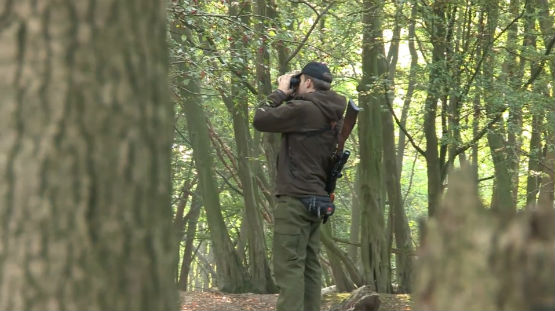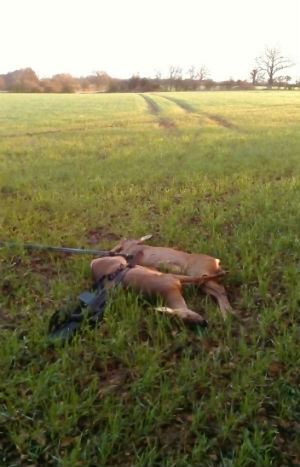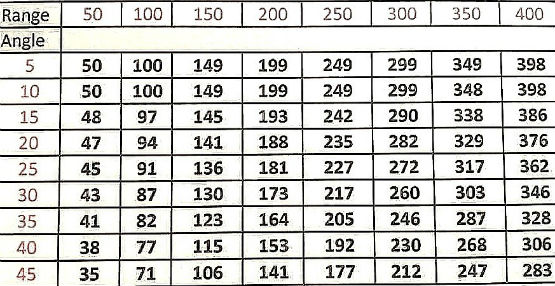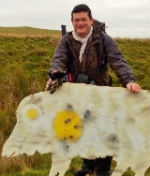Dr Simon Lee offers some guidance on improving your shooting, taking us from bang to buck.

("Having emptied my mental in-tray of all irrelevant clutter, in my mind, nothing else exists, just the trinity and the quarry")
In this article we follow the chain from shooter to quarry or rather from bang to buck. First we start with intent, ‘I want to shoot a deer’. This thought is the initiator, the spark that starts the chain reaction.
There are a myriad of reasons for this, mine are mainly for food and animal management, whatever your choice, be assured, with no other ‘natural’ predator, it’s the right thing to do, on all levels. The realisation that the chain of events starts and ends with me is the first step, and like any chain, the weakest link will be its undoing.
In a binary world, things are either black or white, in our world of hunting, stalking or whatever you are comfortable calling it, almost everything is grey, but identifying what is what can simplify matters.
So let’s start at the other end of the chain, the quarry. What is known?
We can break it down into the six species of the UK, each with its own unique signature and geographical area. Occasionally confusion may arise between similar species, such as Fallow and Sika, but a closer look at key identifiers will open up a world of difference.
So having identified a species, we can predict with some certainty, a little of their behaviour.
 Fallow like herds, Sika can whistle, Roe are territorial, etc. Start looking at where you are, what you see, and signature slot marks and you are well on the way to identifying the quarry and understanding what a detective would call its MO or modus operandi, in other words, how it operates.
Fallow like herds, Sika can whistle, Roe are territorial, etc. Start looking at where you are, what you see, and signature slot marks and you are well on the way to identifying the quarry and understanding what a detective would call its MO or modus operandi, in other words, how it operates.
Once the shot presents itself, legally for season and species, ethically for distance and presentation, a shot can be taken.
But something went wrong. The deer ran off. Be craftier next time and work better with the next variable, the environment.
Next, we look at how the environment breaks down.
* Distance to target
* Terrain type
* Angle
* Visibility
* Wind
* Weather
Distance to target
This might cause some disagreements but it’s all down to the individual and their confidence with the rifle, most UK deer are shot from around 100m or less, past this the environment conspires against success, the best suggestion is to improve your fieldcraft and get closer.
Terrain
Shooting across fields or in a wood? Looking at Red stags on the hill needs a different approach from culling Muntjac from a high seat, so tailor your tactics.
No bullet is twig or brush-proof and some with ballistic tips are actually worsened by minor impacts with foliage.
Angle
This is a factor, the higher uphill or downhill from target you fire from, the real distance to target is affected. See chart below:

Also consider the penetration angle on the quarry, a broadside heart/lung shot on the flat will connect with the vitals and with luck, drop the animal in its tracks.
The same shot at say, 30 degrees uphill may well miss the vital triangle altogether and open another can or worms . . .
Visibility
Dust to dawn, it’s all down to preference. I, personally, prefer dawn as the light is working in your favour, that sinking feeling of losing light in a high seat is enough to cause the shoulders and spirits to sag a little.
Also to be mentioned, fog, mist, stubble smoke, and even summer heat haze have to be considered, the target must be clear, and firing at silhouettes with no discernible backstop is a certain recipe for disaster. . .
Wind
This is a big one. Only practice with your own rifle set up and a better understanding of wind’s effect on ballistics can give more confidence in this area.
Imagine the shooter at the centre of a clock face, a light breeze from one o’clock won’t cause as much variance as a force four from 9 o’clock. Only a clear understanding or what happens to your shots in various wind scenarios will help here, I recently tried to zero my .243 in a 15kt gusting wind, and what a waste of time and ammunition that proved to be. Again, get closer and be less affected, a pattern begins to form. . .
Weather
We seldom get a perfect sunny, windless day here in the UK, so stiffen the upper lip and carry on. But consider your quarry, if it’s howling a gale and hail is bouncing off the grass, where would you rather be? In a field on offer or in a wood taking shelter, so empathise and move forward.
For extremes of the north I have a set of snow whites, but generally if there’s that much snow to warrant wearing them, everything with four legs and a brain will be sheltering out of sight.
Take cover yourself, most licenced hostelry is open all day now. Conversely enough, humid, thundery summer storms seem to rewrite the rulebook on Roe behaviour . . .
The Rifle
In essence, a tube through which a bullet is spat, it is a common mistake to make believe that rifles are sentient. I cringe whenever I hear some wag spouting lines like ‘oh, she doesn’t like such and such ammunition’ or ‘she only fires straight if I don’t clean her . . .’.
Twaddle. A rifle has no opinion, it’s a lump of metal, wood, and glass and will do exactly what its asked if operated correctly. Give it a name if you really have to, but do keep it to yourself!
Calibre - Can it do what you are asking it to do?
Zero, will it shoot consistently from a cold bore at the selected distance and what zero to choose?
Ammunition, is it the right one for the job? Will it have enough energy to fatally destroy the target from a chosen distance?
Interface - This is where the rifle meets the user and is a huge factor to success.
Bipod? Freehand? Quadpod? Sticks? Car bonnet? Wobbly stile?
It matters not, the hold, stance and support all need to be stable and comfortable to ensure success, I have a set of unpleasant experiences to draw from, from nettles on the neck, to brambles under the elbows, through to clouds of voracious midges in the ears, none of which helped my focus, more of which later. . .
So once you are supported and pointing in the right direction, and not zoomed in so as to lose the sight picture, ( yes, it is tempting to zoom in and watch the individual hairs on the quarry’s back, but you need a wider picture. . .) the shot is now almost ready.
At this stage I refer to the ‘holy trinity’ of eye, fingertip, and lungs.
Having emptied my mental in-tray of all irrelevant clutter, in my mind, nothing else exists, just the trinity and the quarry.
Breathing slowly, a sinus rhythm, I believe it’s called, will raise and lower the crosshairs slowly as you observe your target.
Depending on preference, held in or blown out, you then squeeze the trigger with the pad of the finger, by now having visualised what will ensue at the other end.
A rapid recap on the five B’s. See previous articles.
Bullet
Backstop
Bystanders
Breathing
Bang
The bang, when it happens, should come as a surprise. If it doesn’t there is another protocol to follow.
When it doesn’t go as expected, a link in this chain has failed, ignore it and put into practice your remedial action plan, a reload without losing sight picture and perhaps a second shot.
When it has gone right, the chain is complete and the relief is palpable, it is not unknown to feel the immediate call of nature at this point, adrenal glands are working overtime and soon the quarry is lying deceased at your feet and the real work begins . . .
To understand the working of the chain we must have an appreciation of the variables and constants involved, some we can change, others we can’t and knowing the difference will undoubtedly make you better at what you do.
 Dr Simon Lee is an experienced hunter and regular contributer to County Deer Stalking. To read more from Simon follow this link: how-much-gun-is-too-much-gun
Dr Simon Lee is an experienced hunter and regular contributer to County Deer Stalking. To read more from Simon follow this link: how-much-gun-is-too-much-gun



















